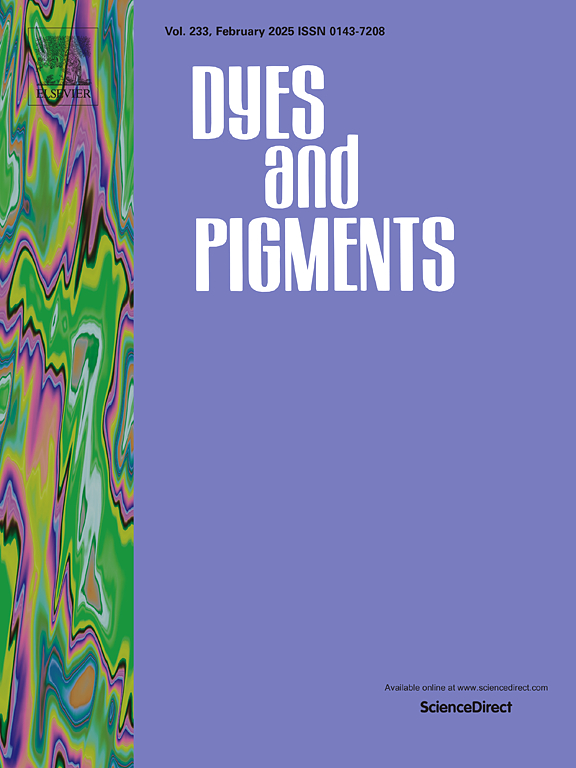Advancements in Spiropyran probes: Mechanisms, applications in detection and imaging
IF 4.1
3区 工程技术
Q2 CHEMISTRY, APPLIED
引用次数: 0
Abstract
Spiropyrans are classic molecular switching compounds that can reversibly transition between the closed-loop structure (spiropyran, SP) and the open-loop structure (merocyanine, MC) in response to external stimuli. These isomers exhibit distinct spectral characteristics and noticeable color changes due to their differing structural properties. This unique behavior makes spiropyrans highly applicable for the detection and imaging of various analytical targets. Furthermore, the reversible nature of these isomers enhances their utility. This article presents a comprehensive review of the applications of small-molecule spiropyran derivatives in chemical sensing and biological imaging from 2015 to 2024. It covers Photochromism detection applications for metal ions (Al3+, Li+, Ca2+, Cu2+, Pb2+, Cr3+, Ce3+, Fe2+), anions (CN⁻), small molecules (SO2, H2S, N2H4), and nucleic acids (calf thymus DNA). Additionally, Acidochromism has been utilized for pH detection in live cells, P. aeruginosa, and zebrafish, and for monitoring lysosomal pH changes. Solvatochromism enables the detection of metal ions (Cu2+), anions (CN⁻), and polarity changes in lysosomes. Furthermore, Thermochromism is employed for metal ion detection (Cu2+) and monitoring vaccine misuse.

螺吡喃是一种典型的分子开关化合物,可在闭环结构(螺吡喃,SP)和开环结构(美拉青,MC)之间可逆转换,以响应外部刺激。由于结构特性不同,这些异构体表现出不同的光谱特征和明显的颜色变化。这种独特的行为使得螺吡喃非常适用于各种分析目标的检测和成像。此外,这些异构体的可逆性也增强了它们的实用性。本文全面回顾了 2015 年至 2024 年小分子螺吡喃衍生物在化学传感和生物成像中的应用。文章涉及金属离子(Al3+、Li+、Ca2+、Cu2+、Pb2+、Cr3+、Ce3+、Fe2+)、阴离子(CN-)、小分子(SO2、H2S、N2H4)和核酸(小牛胸腺 DNA)的光致变色检测应用。此外,酸性色谱法还可用于活细胞、铜绿假单胞菌和斑马鱼的 pH 值检测,以及溶酶体 pH 值变化的监测。溶色法可检测溶酶体中的金属离子(Cu2+)、阴离子(CN-)和极性变化。此外,热致变色法还可用于检测金属离子(Cu2+)和监测疫苗滥用。
本文章由计算机程序翻译,如有差异,请以英文原文为准。
求助全文
约1分钟内获得全文
求助全文
来源期刊

Dyes and Pigments
工程技术-材料科学:纺织
CiteScore
8.20
自引率
13.30%
发文量
933
审稿时长
33 days
期刊介绍:
Dyes and Pigments covers the scientific and technical aspects of the chemistry and physics of dyes, pigments and their intermediates. Emphasis is placed on the properties of the colouring matters themselves rather than on their applications or the system in which they may be applied.
Thus the journal accepts research and review papers on the synthesis of dyes, pigments and intermediates, their physical or chemical properties, e.g. spectroscopic, surface, solution or solid state characteristics, the physical aspects of their preparation, e.g. precipitation, nucleation and growth, crystal formation, liquid crystalline characteristics, their photochemical, ecological or biological properties and the relationship between colour and chemical constitution. However, papers are considered which deal with the more fundamental aspects of colourant application and of the interactions of colourants with substrates or media.
The journal will interest a wide variety of workers in a range of disciplines whose work involves dyes, pigments and their intermediates, and provides a platform for investigators with common interests but diverse fields of activity such as cosmetics, reprographics, dye and pigment synthesis, medical research, polymers, etc.
 求助内容:
求助内容: 应助结果提醒方式:
应助结果提醒方式:


